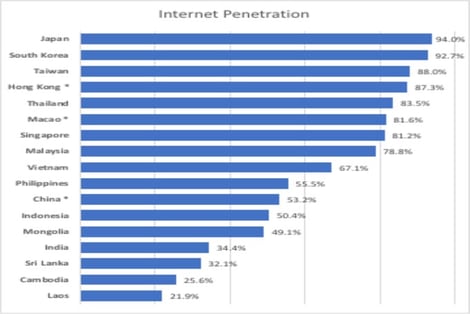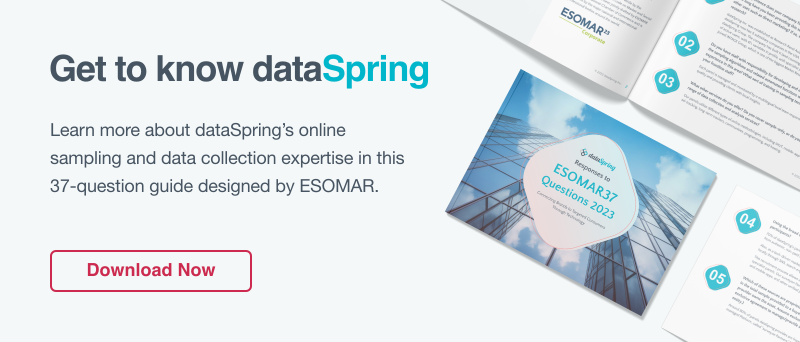
Having conducted thousands of research projects in Asia, we have seen repeated mistakes made when conducting studies in the region.
Let us help you ensure that your next Asian market research study yields the accurate and representative results you expect by avoiding these common mistakes.
While conducting market research in Asia can be relatively simple as more and more providers enter the market, collecting data that truly reflects the market still takes effort. As Tomohiro Hosono, Global Technical Sales Director at dataSpring, makes clear, you can never talk about Asia as a single region; it has more languages than Europe and a host of different backgrounds and cultures. Tomo provides three key mistakes researchers and consultants should look to avoid when conducting research in Asia.
Tomohiro Hosono - CEO, dataSpring

Tomohiro Hosono is CEO working in dataSpring's 24/7 Operations Hub in Manila. He is responsible for making sure that all clients are happy with using dataSpring’s system for their projects. In his view, the key to success is focusing on the clients’ local background and needs, down to the smallest detail.
Mistake 1: Failing to Localize Your Questionnaire
Given the diverse social, cultural, and historical background of the region, localizing the questionnaire is essential for study success. Everything from translation to question and answer choices should be reviewed by local researchers. Do not assume one questionnaire will work across Asia. This assumption can lead to numerous issues including collecting bad data, offending local respondents, and even running afoul of local governments.
An example Tomo cites was a recent consumer electronics awareness study conducted in multiple Southeast Asian countries. Upon reviewing the questionnaire his team found issues with a question regarding sources of awareness. "They included a list of places a respondent could have seen their products; unfortunately, the list didn't really make sense in many of the countries we were fielding the study," Tomo said.
The client included 'department store' in the list, but for Malay respondents, department stores are not common and in fact, no proper translation is possible. Also included as an option was 'convenience store', which in Thailand is not a place consumer electronics are purchased.
Tomo continues, "We alerted the client to the issue; however, they did not want to adjust as the study had previously fielded in other countries. Needless to say, there were a significant number of 'Other' responses, which didn't allow the client to get a true read on the market." The key is to be flexible, use a reputable and experienced firm, and trust local insight.
For quick local insights, check out our Eye on Asia articles!

Mistake 2: Committing to One Data Collection Method
Infrastructure development and technology adoption vary significantly across Asia (see chart below). It is critical to be open to using data collection methods that fit the country and methodology.
"Sometimes this means using offline methods," says Tomo. This takes some clients by surprise but analyzing mixed method data is preferable to trying to analyze junk data. "Sometimes clients believe the Internet is more ubiquitous than the reality. In point of fact, computers and smartphones may not be owned by a large percentage of the population you may be trying to reach."
Dictating a methodology – especially online – may lead to collecting data that is not worth analyzing. So, consider local conditions and if necessary, be prepared for off-line data collection.

*China figures do not include Hong Kong, Macao or Taiwan.
Source: 2017 Internet World Stats
Mistake 3: Assuming All 'Locals' are Local
Many Asian countries have multiple ethnic groups in significant numbers. In these areas (Indonesia and Vietnam, for example) terms like 'Gen Pop' are not as relevant. It is critical to work with a quality sample firm that understands the local population.
"Our approach is to understand what our clients are really looking into, and what answers they need to make good business decisions. That way we can create a sample plan that best meets the study objectives," Tomo says. Bringing your research firm fully into the conversation regarding sample needs and study objectives will allow for a better recommendation and ultimately a better study.

Final Thoughts
Tomo offers his final thoughts for study success in Asia: "Ultimately, the key is to be very open about understanding the local culture and use a firm that has the ability to bring those perspectives together when conducting the study."
We hope you've found the local insights provided in this article useful! If you're planning to run a study in Asia let us help you, Contact Us below.


 Download Panel Book
Download Panel Book


